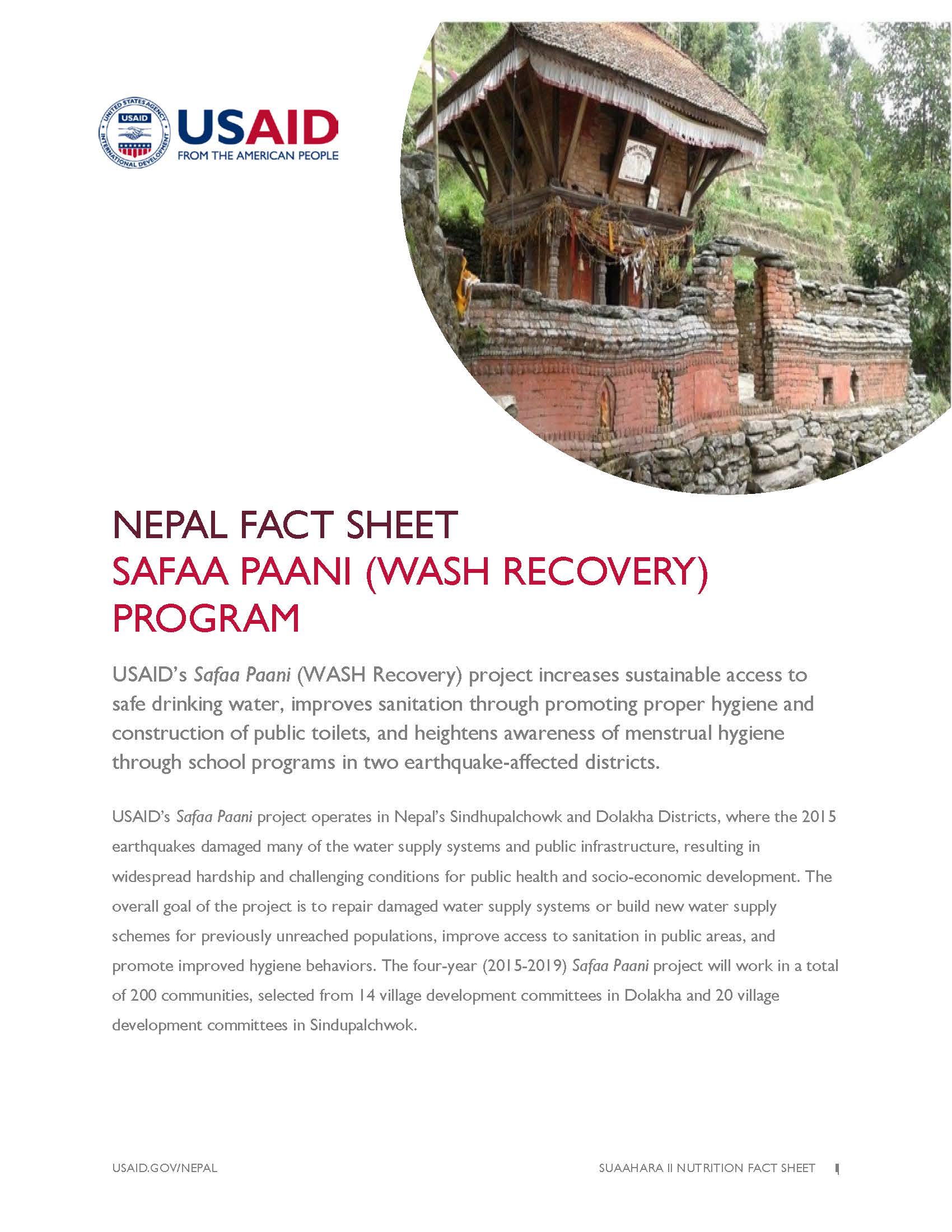Speeches Shim
SAFAA PAANI (WASH RECOVERY) PROGRAM
USAID’s Safaa Paani (WASH Recovery) project increases sustainable access to safe drinking water, improves sanitation through promoting proper hygiene and construction of public toilets, and heightens awareness of menstrual hygiene through school programs in two earthquake-affected districts.
USAID’s Safaa Paani project operates in Nepal’s Sindhupalchowk and Dolakha Districts, where the 2015 earthquakes damaged many of the water supply systems and public infrastructure, resulting in widespread hardship and challenging conditions for public health and socio-economic development. The overall goal of the project is to repair damaged water supply systems or build new water supply schemes for previously unreached populations, improve access to sanitation in public areas, and promote improved hygiene behaviors. The four-year (2015-2019) Safaa Paani project will work in a total of 200 communities, selected from 14 village development committees in Dolakha and 20 village development committees in Sindupalchwok.
PROJECT OVERVIEW
To improve sustainable drinking water sources, the Safaa Paani project works together with the Department of Water Supply and Sewerage (DWSS) under the Ministry of Water Supply and Sanitation and other stakeholders to lead reconstruction of water and sanitation infrastructure across the two target districts. The project also strengthens the capacity of public and private sector entities to lead construction efforts, as well as to oversee the maintenance of the infrastructure. Safaa Paani particularly focuses on meeting the water supply needs of vulnerable communities who do not have access to safe water. A key component is improving governance around water and sanitation infrastructure, ensuring proper use and maintenance of water supply facilities. To improve sanitation and hygiene, the project also mobilizes community-based organizations to promote proper hygiene and engages private sector companies to operate public toilets on a pay-per-use basis.
KEY OUTCOMES
- Map water sources using GIS technology across the two project districts
- Renovate or construct 200 community water supply systems in earthquake-affected communities
- Train water users committees trained to develop water safety plans and maintenance plans for each water supply system
- Conduct water quality tests for microbiological and physical parameters for each water supply system
- Create10 public latrines at markets, bus stops, and temples
- Promote sanitation, hygiene and menstrual hygiene management at temporary learning centers and schools


Comment
Make a general inquiry or suggest an improvement.